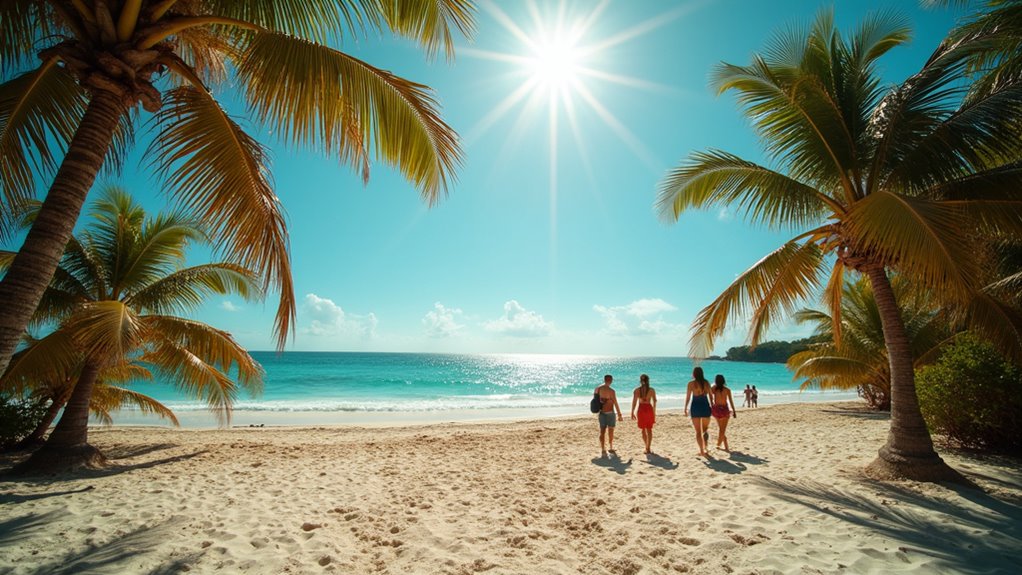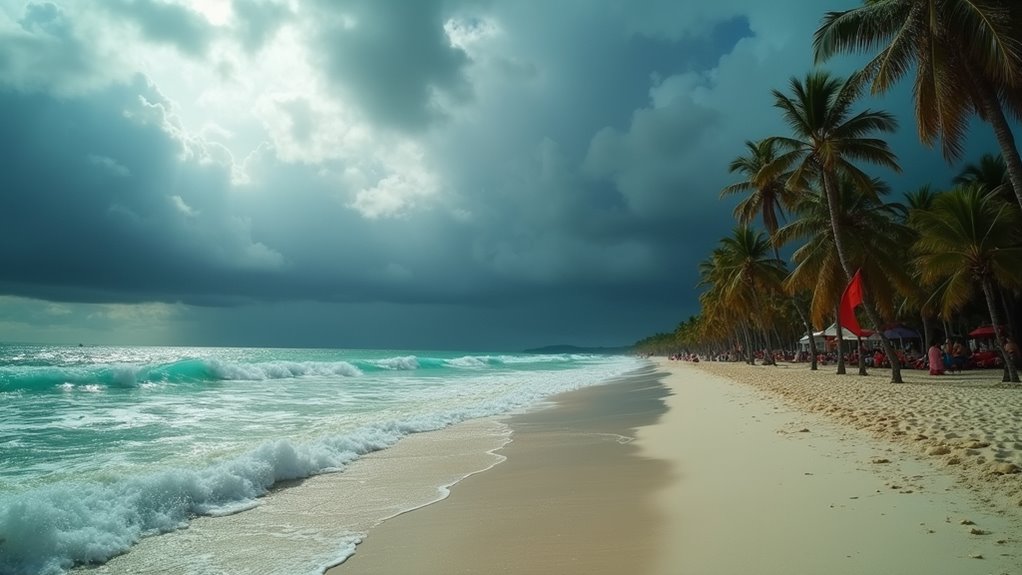Physical Address
304 North Cardinal St.
Dorchester Center, MA 02124
Physical Address
304 North Cardinal St.
Dorchester Center, MA 02124

Maximize your Riviera Maya vacation by avoiding the peak hurricane season and sargassum seaweed influx that can disrupt your beachside getaway.
When planning a trip to the Riviera Maya, it’s essential to take into account the seasonal challenges that can disrupt your vacation. From the risk of hurricanes during peak hurricane season to the influx of sargassum seaweed that can limit beach access, there are several factors to evaluate. Understanding the best and worst times to visit can help you make an informed decision and guarantee your trip is as enjoyable as possible. Let’s explore deeper into the guidance provided in this extensive guide.

Although the Riviera Maya is a popular tourist destination year-round, it faces several seasonal challenges that can impact your travel experience.
Hurricane season peaks from August to October, bringing increased storm surge, flight cancellations, and potential resort closures.
Hurricane season in the Riviera Maya brings increased storm surge, flight cancellations, and potential resort closures from August to October.
The influx of Sargassum seaweed from April to August can reduce water clarity, cause respiratory issues, and limit beach access.
High-season crowds from December to April overwhelm infrastructure, leading to traffic congestion, overcrowded attractions, and price spikes.
Plus, power outages, water management issues, and unpredictable weather during the shoulder season from November to March can disrupt your vacation plans.
When planning your trip, it’s crucial to consider avoiding the Riviera during these challenging periods to ensure a more enjoyable experience.
Visiting the Riviera Maya during the wet season, which spans from June to November, requires careful planning and a flexible mindset.
Expect afternoon showers to become routine, with humidity levels reaching up to 90% in June and July. While sea temperatures peak at a comfortable 84°F in August, water sports may be impacted by occasional storm surges. Hurricane season lasts from June through October and heightens the need for travel insurance.
Protect your electronics from the humidity and rain, and opt for air-conditioned transportation over open-air options.
However, the wet season offers advantages, including fewer crowds at major attractions and lower accommodation rates.
Just be ready to adjust your daily itinerary to account for the weather.

The Riviera Maya‘s prime location within the Atlantic hurricane belt poses significant risks during the peak season from August to October.
To navigate these challenges, consider the following:
Humidity levels significantly affect perceived temperature during the hurricane season, with humidity between June and October ranging from 80% to 84%, contributing to a hotter feel during these months.
Staying informed and prepared is vital to minimize disruptions and guarantee your safety during the hurricane season in the Riviera Maya.
As the Riviera Maya’s wet season arrives, you’ll need to be mindful of the heightened health risks. Increased mosquito activity due to humidity and standing water raises the threat of mosquito-borne illnesses.
Standard repellents can harm the local marine ecosystem, so eco-friendly alternatives are essential near coastal areas.
Waterborne pathogens surge, with higher risks of Cyclospora outbreaks and skin irritations from decomposing sargassum. Violent crime threats may also increase during the wet season, requiring extra caution.
Food safety also poses challenges, as contaminated water and improperly handled meals can cause gastrointestinal issues.
Zoonotic diseases like rabies also pose concerns, and respiratory problems may arise from volcanic ash or sargassum decomposition.
Staying vigilant and taking preventive measures is key to safeguarding your health during the Riviera Maya’s wet season.

Alongside the health precautions required during the Riviera Maya’s wet season, financial considerations become essential when visiting this popular destination.
The peak season from December to March/April sees rates spike by 25-40% for hotels, while airfare and transfers increase by 30-50%. Vacation rental prices also surge, driven by tourism demand and investors capitalizing on the boom. Fewer travelers lead to more availability in hotels and attractions during the low season.
Travelers may want to consider Cancun as alternative for better hotel availability during peak seasons when Riviera Maya is especially crowded.
Additionally:
Careful budgeting and planning are vital to manage costs during the Riviera Maya’s peak season.
Though the Riviera Maya experiences its lowest visitor numbers during the off-peak season, local businesses and tourism authorities are actively working to mitigate the economic impact.
Tourism boards are increasing promotional efforts to attract more visitors, while businesses offer discounts and deals to incentivize bookings. Hotel occupancy rates can be as low as 50% during the low season, but this presents an opportunity for travelers to enjoy a more relaxed and less crowded experience.
Despite lower occupancy rates, many attractions remain open and accessible, allowing travelers to explore the region without peak season crowds.
Collaboration between local businesses and tourism boards is essential for successful promotions that highlight the region’s appeal during less crowded periods.
While infrastructure projects cause temporary disruptions, they aim to improve tourism in the long term by enhancing accessibility and visitor experience.
Many travelers consider Playa del Carmen a perfect getaway destination even during off-peak times due to its charm and activities.
Visiting Riviera Maya during the worst time of year is an absolute nightmare. You’ll be drenched in torrential rain, terrorized by hurricanes, and bombarded by sargassum seaweed. Your vacation will be ruined, your health jeopardized, and your wallet emptied. Avoid these disastrous months at all costs if you value your sanity, safety, and savings. The risks simply aren’t worth it.